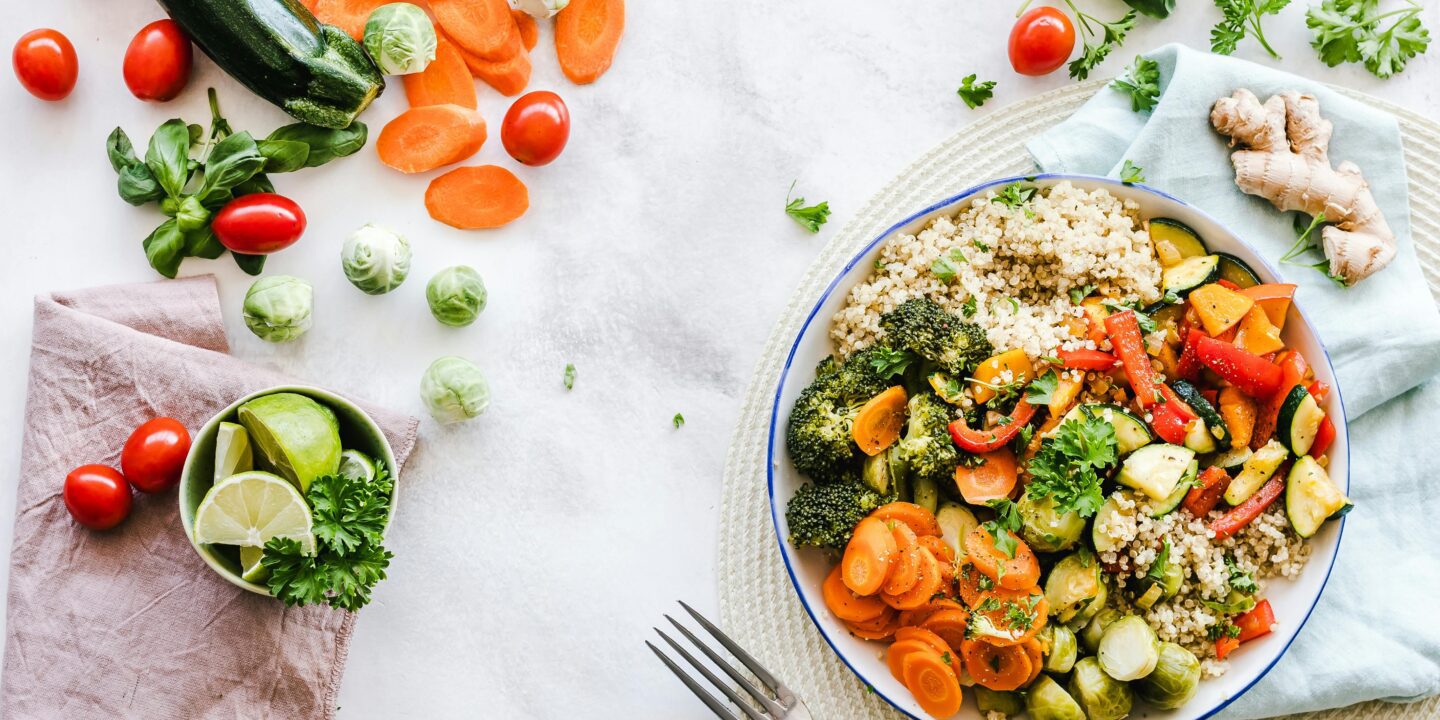
In today’s fast-paced world, it’s easy to overlook where our food comes from. We stroll into a grocery store or browse an online food delivery app, pick what we want, and enjoy it without much thought. But behind every apple, loaf of bread, or carton of milk lies a complex and fascinating journey—a journey that spans farms, processing facilities, transportation networks, and distribution hubs before reaching your table. This process, known as the farm-to-table journey, not only involves the logistics of getting food to consumers but also touches on sustainability, ethics, and our relationship with what we eat.
Understanding how food gets from the farm to your plate gives you greater insight into agriculture, supply chains, and the people who make your meals possible. Let’s take a deep dive into the journey of food from its origin on the farm to your kitchen table.
Step 1: The Farm – Where It All Begins
The journey starts on farms—fields of crops, orchards of fruit trees, pastures for livestock, or aquaculture setups for fish and seafood. Farmers are the backbone of the food chain. Whether they’re growing organic heirloom tomatoes or raising grass-fed cattle, farmers make choices that influence the quality, nutritional value, and environmental impact of the food we eat.
Different types of farms focus on specific food products:
- Crop farms grow grains (like wheat, rice, and corn), vegetables, and fruits.
- Dairy farms produce milk, cheese, yogurt, and other milk-based products.
- Livestock farms raise animals for meat, eggs, and other products.
- Poultry farms specialize in raising chickens, ducks, and turkeys.
- Aquaculture farms raise fish and seafood in controlled environments.
Modern farming uses technology such as GPS-guided tractors, drones for crop surveillance, and soil sensors to optimize yield while minimizing environmental damage. But even with advanced tools, farming is deeply tied to the rhythms of nature—sunlight, rainfall, soil quality, and seasonal changes.
Step 2: Harvesting and Initial Processing
Once crops are ripe or animals are ready for market, the next phase begins: harvesting and initial processing. This can mean hand-picking strawberries, mechanically harvesting corn, or collecting eggs daily from a poultry farm.
After harvest, many foods undergo primary processing, which involves basic preparation to make them suitable for storage or further use. Examples include:
- Cleaning and sorting fruits and vegetables
- Milling wheat into flour
- Pasteurizing milk to kill harmful bacteria
- Butchering meat and poultry
This phase is critical to preserving freshness and ensuring food safety. Some foods are packed and shipped shortly after harvest, especially if they’re fresh produce, while others are sent to manufacturing plants for further processing.
Step 3: Food Processing and Manufacturing
This is where raw ingredients are turned into the products we recognize on store shelves. For example, wheat flour is transformed into bread, pasta, or pastries. Tomatoes might become ketchup or pasta sauce. Dairy gets turned into cheese or ice cream. Processing can range from minimal (e.g., slicing and packaging apples) to extensive (e.g., creating a frozen dinner with multiple ingredients).
Food processing serves several purposes:
- Preservation: Techniques like canning, freezing, and drying extend shelf life.
- Safety: Pasteurization, sterilization, and other techniques reduce microbial risks.
- Convenience: Foods are made ready to eat or easy to prepare.
- Flavor and appeal: Processing enhances taste, texture, and appearance.
While processed food often gets a bad rap, not all processing is unhealthy. For instance, freezing vegetables shortly after harvest can retain more nutrients than fresh produce that’s been in transit for a week.
Step 4: Packaging and Labeling
Packaging is more than aesthetics—it’s essential for maintaining freshness, protecting against contamination, and conveying important information. Labels tell consumers about ingredients, nutritional value, allergens, expiration dates, and origin.
Packaging may also involve sustainable considerations. The rise in eco-conscious consumers has prompted many companies to use biodegradable, recyclable, or reusable materials to minimize environmental impact.
For example, a box of granola might use compostable paperboard, while beverages increasingly come in aluminum cans or glass instead of plastic. Smart packaging technologies, such as QR codes or freshness indicators, are also becoming more common to give buyers real-time information about their food.
Step 5: Transportation and Distribution
After packaging, food enters a vast logistics network. Refrigerated trucks, cargo ships, rail systems, and planes move food from processing facilities to distribution centers, wholesalers, and retailers. This is known as the cold chain, especially for perishable items like dairy, meat, and fresh produce, where maintaining a specific temperature range is critical.
Food might travel locally or globally. A mango in your smoothie may have come from Mexico. That wild-caught salmon on your dinner plate could have started its journey in Alaska and passed through several hands before arriving at your local grocery store.
Distribution also includes warehousing, where food is stored until it’s needed by retailers. Sophisticated inventory management ensures products don’t expire on shelves and helps match supply with demand.
Step 6: Retail and Food Service
Once food reaches its final stop in the supply chain, it’s time for you to buy it. This stage includes:
- Supermarkets and grocery stores
- Farmers’ markets
- Online grocery delivery platforms
- Restaurants, cafes, and food trucks
- School and workplace cafeterias
At this point, marketing plays a huge role. Packaging, price, placement, and promotion all influence what you choose to buy. Food presentation, freshness, and availability shape consumer perception and habits.
Restaurants and chefs may source ingredients directly from local farms, forming farm-to-table partnerships. This reduces travel time, supports local economies, and often results in fresher, more seasonal dishes.
Step 7: Your Table – Preparing and Enjoying Your Meal
Finally, the food reaches your hands. Whether you’re unpacking a CSA (Community Supported Agriculture) box, ordering takeout, or cooking a home-cooked meal, this is where your relationship with food becomes personal.
Preparation varies—from chopping veggies and simmering soups to microwaving frozen meals. Cooking styles, cultural traditions, and personal preferences all influence how you turn ingredients into nourishment.
At the dinner table, food becomes more than sustenance—it becomes an experience. It brings people together, conveys culture and history, and offers pleasure and comfort.
The Human and Environmental Impact
Understanding the farm-to-table journey isn’t just about logistics; it’s about values. This system has wide-reaching implications for society and the planet.
Supporting Farmers
Farmers work hard, often under challenging conditions. Supporting local and ethical producers can improve their livelihoods and encourage sustainable practices.
Sustainability and Food Miles
The farther food travels, the more carbon emissions are associated with its journey. Buying local or seasonal produce can help reduce your carbon footprint. Similarly, choosing food grown with sustainable practices—such as organic farming or regenerative agriculture—helps preserve soil, water, and biodiversity.
Food Waste
A staggering amount of food is wasted at every stage—from imperfect produce left on the farm, to spoilage during transit, to uneaten leftovers. By being mindful shoppers and eaters, we can reduce waste and use resources more efficiently.
Ethical Choices
Modern consumers are increasingly aware of ethical issues like animal welfare, fair labor practices, and responsible sourcing. Choosing cage-free eggs, fair-trade coffee, or plant-based options is a way to align your purchases with your values.
The Rise of the Farm-to-Table Movement
The farm-to-table or farm-to-fork movement encourages consumers to eat food that comes directly from local farms with minimal processing. This philosophy embraces transparency, freshness, sustainability, and a closer connection between eaters and growers.
Farm-to-table restaurants, farmers’ markets, and CSA programs are gaining popularity. They aim to shorten the food supply chain, reduce environmental impact, and foster community.
Even grocery stores are catching on, labeling locally grown produce and partnering with regional farms. And with the rise of social media, people are more interested in knowing the stories behind their food—who grew it, how it was raised, and what impact it has on the world.
How You Can Be Part of the Journey
You don’t have to be a farmer or a chef to appreciate the farm-to-table process. Here are some ways you can be a more mindful participant:
- Buy Local: Shop at farmers’ markets or join a CSA to get seasonal, local produce.
- Grow Your Own Food: Even a small herb garden connects you to the growing process.
- Read Labels: Learn where your food comes from and how it was made.
- Reduce Waste: Plan meals, use leftovers creatively, and compost when possible.
- Cook More: Preparing your meals helps you value ingredients and control what goes into your body.
- Support Ethical Brands: Choose companies that prioritize fair trade, animal welfare, or regenerative agriculture.
Conclusion: The Journey Matters
From soil to supper, every bite you take has a story. The farm-to-table journey is a complex, dynamic system that involves countless people, places, and processes. Understanding this journey helps us make more informed, ethical, and sustainable choices.
Food connects us—to the land, to culture, to each other. By appreciating the journey your food takes, you not only deepen your awareness but also help shape a better food system—one that is just, resilient, and nourishing for generations to come.





















